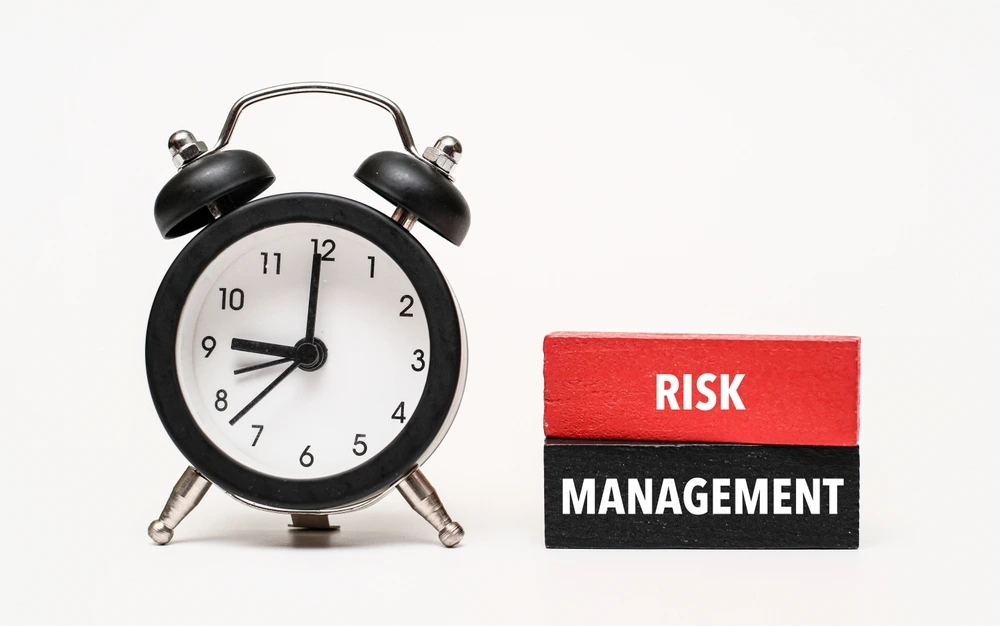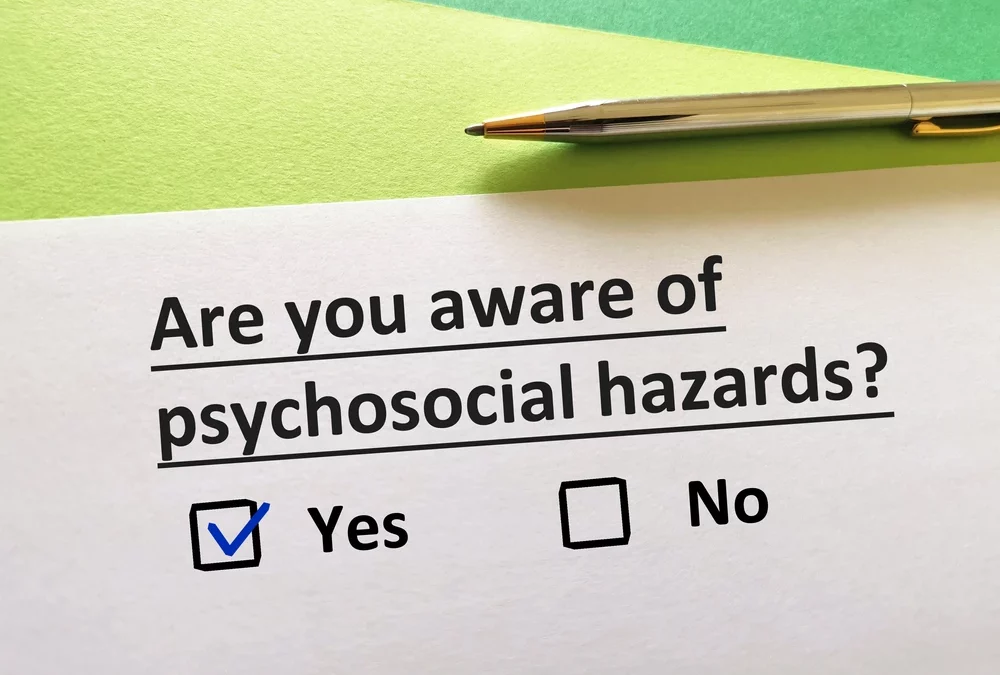
Workplace stress and mental health issues have become a global crisis, affecting employees in all industries. If not addressed, these problems can lower productivity, morale, and overall success in organisations. Common psychosocial hazards are factors in the workplace that harm a person’s mental and social well-being. They can come from poor job design, a negative company culture, or conflicts with coworkers, leading to stress, burnout, and lower performance.
Ignoring psychosocial hazards can have serious consequences, such as worsening mental health, more absences, and higher employee turnover. Organisations that do not tackle these risks may face reduced efficiency, legal issues, and damage to their reputation.
What Are Psychosocial Hazards?
Psychosocial hazards contain workplace factors that negatively affect employees’ mental health and well-being. These hazards can take many forms, including:
- Workplace bullying – Persistent intimidation, humiliation, or exclusion by colleagues or superiors, creating a hostile work environment.
- Job insecurity – Uncertainty about ongoing employment, often heightened by economic downturns or organisational restructuring.
- Excessive workload – Unreasonable deadlines, overwhelming responsibilities, and insufficient resources leading to chronic stress.
- Poor organisational culture – A lack of support, recognition, or inclusivity within the workplace, fostering disengagement and dissatisfaction.
- Role ambiguity – Unclear job expectations and conflicting responsibilities, resulting in confusion, anxiety, and diminished performance.
- Poor workplace relationships – Ineffective support, conflict among colleagues, and inadequate role clarity can all contribute to stress and other health risks in the workplace.
How Psychosocial Hazards Impact Employees?
Prolonged exposure to psychosocial hazards, including poor support from supervisors and colleagues, can severely impact employees’ mental health, contributing to conditions such as anxiety, depression, and emotional exhaustion. Workplace stress impairs cognitive function, diminishes self-confidence, and hinders decision-making abilities. Over time, affected employees may disengage, experience reduced productivity, or seek alternative employment.
Statistics & Trends
Recent research highlights the growing prevalence of psychosocial risks:
- The World Health Organisation (WHO) recognises workplace stress as a significant contributor to global mental health disorders.
- The Queensland Human Rights Commission – TNS report found that one in five employees experiences work-related stress or burnout.
- Businesses have reported a 50% increase in absenteeism due to psychosocial stressors, resulting in billions of dollars in lost productivity annually.
- Traumatic events in the workplace, such as exposure to abuse or harm, significantly contribute to psychological distress and work-related stress, particularly in high-risk professions like healthcare and emergency services.
How To Manage The Risks Of Psychosocial Hazards?

Effectively managing psychosocial hazards is essential for fostering a safe, productive, and supportive workplace. By implementing proactive strategies and providing practical guidance, organisations can create a culture that prioritises psychological well-being, enhances job satisfaction, and improves overall performance.
Here are some ways to manage the risk of psychosocial hazards:
Identifying Hazards Early
Regular employee surveys help assess job satisfaction and mental well-being while monitoring absenteeism and turnover rates, which can reveal unusual patterns indicative of workplace stress. Implementing anonymous reporting systems encourages employees to voice concerns without fear of retaliation, fostering a culture of openness and early intervention. Adhering to health and safety duties is crucial for identifying and managing work-related risks and ensuring compliance with legal standards.
Assessing Psychosocial Risks
Assessing psychosocial risks is a crucial step in managing psychosocial hazards in the workplace. This process involves identifying potential hazards, evaluating their likelihood and impact, and determining the level of risk they pose to employees’ physical and psychological health.
By thoroughly assessing psychosocial risks, employers can pinpoint areas for improvement and develop targeted strategies to eliminate or minimise these risks, thereby promoting a healthier and more supportive work environment.
Creating a Supportive Work Environment
Leadership plays a crucial role in fostering psychological safety and well-being. Enforcing zero-tolerance policies against workplace violence, bullying, harassment, and discrimination ensures a respectful and inclusive environment.
Implementing recognition and reward systems boosts morale by acknowledging employee contributions, while peer support programs help build a collaborative and supportive workplace culture.
Employee Involvement
Empowering employees to participate in psychosocial risk management strengthens workplace resilience. Establishing wellness committees allows employees to address mental health concerns collectively.
Regular feedback sessions provide valuable insights into stress levels and job satisfaction, enabling proactive adjustments. Professional development opportunities further enhance resilience and career growth, helping employees manage workplace challenges effectively.
Training & Awareness
Education and awareness are critical in preventing and mitigating psychosocial risks. It equips employees with the skills to recognise and respond to early signs of distress. Leadership development programs focus on empathetic management and conflict resolution, ensuring managers can effectively support their teams. Stress management workshops provide employees with practical coping strategies, promoting overall well-being and workplace productivity.
Proactive management of psychosocial hazards not only protects employees’ well-being but also enhances engagement, performance, and organisational success.
How To Avoid Psychosocial Hazards?
Effectively preventing psychosocial hazards requires a proactive approach that fosters a healthy, supportive, and balanced work environment. By implementing structured strategies, organisations can enhance employee well-being, minimise workplace stress, and improve overall productivity.
Implementing Stress Management Programs
Structured stress management programs can significantly reduce psychosocial risks and improve employee resilience. Incorporating mindfulness and relaxation techniques helps employees regulate emotions and manage stress more effectively. Workplace wellness initiatives, such as exercise programs and ergonomic assessments, contribute to physical and mental well-being.
Providing access to professional counselling ensures employees facing persistent stressors receive the support they need to maintain their mental health.
Encouraging Open Communication
Transparent communication fosters trust, strengthens workplace relationships, and reduces tension. Establishing open-door policies allows employees to have confidential discussions with management, ensuring concerns are addressed promptly.
Conducting regular town hall meetings creates a platform for open dialogue about organisational changes, while anonymous feedback channels encourage employees to voice their concerns candidly without fear of repercussions.
Work-Life Balance Initiatives
Promoting work-life balance is essential for preventing burnout and sustaining employee engagement. Employers can offer flexible work arrangements, including remote work options and adjustable hours, to accommodate individual needs. Mandatory break periods help prevent cognitive fatigue and maintain productivity throughout the day.
Establishing clear boundaries between work and personal time ensures employees are not expected to engage in work-related tasks outside their designated hours.
Workplace Design & Role Clarity
A well-structured work environment reduces unnecessary stressors and enhances efficiency. Clearly defining job roles prevents ambiguity and overlapping responsibilities, allowing employees to understand their tasks and expectations. Providing adequate resources, including tools, technology, and staffing support, ensures employees can perform their duties effectively.
Optimising workspace layout by incorporating ergonomic designs enhances comfort and reduces physical strain, contributing to overall well-being.
How Can Your Best Life Employee Assistance Programme (YBL EAP) Help?

Your Best Life Employee Assistance Programme (YBL EAP) offers a dedicated support system designed to help both employers and employees manage and prevent psychosocial hazards. With a team of qualified psychologists, social workers, and counsellors, Your Best Life EAP provides confidential and professional assistance to create a safe and supportive work environment.
For employers, Your Best Life EAP helps businesses meet their obligations under the Work Health and Safety Law by offering responsive, client-centred, and outcome-focused services. Employers can tailor the programme to suit their workforce’s specific needs, ensuring a personalised approach to employee well-being. Upon enrolment, businesses receive a comprehensive Welcome Pack, providing essential information to support implementation.
For employees, Your Best Life EAP offers accessible mental health support through phone consultations, telehealth sessions, or in-person appointments at centres located across the Sunshine Coast, Moreton Bay, and Gympie. As an independent service, all therapists maintain complete confidentiality, ensuring employees feel safe seeking professional guidance without workplace interference.
By integrating Your Best Life Employee Assistance Programme into workplace strategies, organisations can effectively mitigate psychosocial risks, enhance employee well-being, and foster a resilient, engaged workforce.
Why Choose Your Best Life Employee Assistance Programme?
Your Best Life EAP stands out as a trusted provider, offering unparalleled expertise in workplace mental health support. With a team of qualified psychologists and counsellors, the programme delivers evidence-based solutions tailored to organisational needs.
Recognised by industry leaders and mental health professionals, Your Best Life EAP ensures compliance with best-practice standards, reinforcing its authority in psychosocial risk management.
Final Thoughts
Psychosocial hazards pose significant risks to workplace well-being, affecting mental health, productivity, and organisational success. Identifying hazards early, fostering a supportive work culture, and implementing proactive strategies are essential to mitigating these risks.
Employers must prioritise mental well-being by integrating robust support systems. Investing in an Employee Assistance Programme like Your Best Life EAP ensures employees receive the resources they need to thrive professionally and personally.
Workplace mental health is not a luxury – it is a necessity. Organisations that champion well-being cultivate a resilient, engaged workforce, driving sustained success in today’s competitive landscape.

